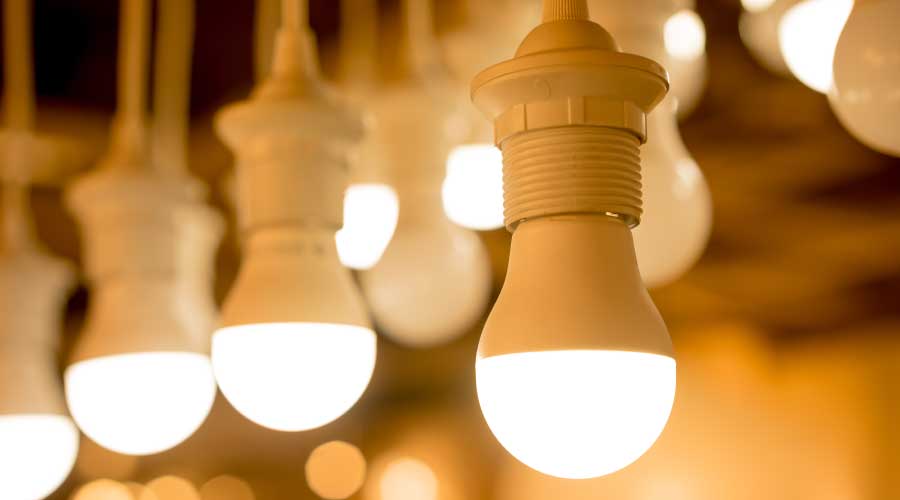LEDs: Questions About Fixtures, Replacement Lamps, Tubes, Controls
While replacement lamps may fit into existing screw-based or pin-based sockets, they may not fit into an existing fixture properly, and often do not perform exactly the same as the existing technology. Keep in mind that an existing fixture designed for an incandescent lamp may not have adequate air circulation, may be unable to dissipate heat from an LED replacement lamp, or may be unable to properly support a heavy or large LED bulb. Make sure to compare equivalency in lumen output and CBCP for directional lamps — these values should be published. Additionally, as seen with early CFL lamps, because these lamps are expensive and relatively easy to uninstall, theft can be an issue. Look for Energy Star-qualified LED "bulbs" (including standard "A" lamps, globes, and flame-shaped) if you are working with a utility or efficiency program to get a rebate.
Fixtures purpose-designed for use with LED light sources operate more effectively in terms of optical control and efficiency, and may last longer than a replacement lamp. That's because the entire system is designed to work with the LED light source. Because LED fixtures are tested as a complete unit, designers have specific information on how the system is supposed to be operated and can better predict how it will perform in the space. They can then create a design that is more effective and efficient. Purpose-designed fixtures that are Energy Star-listed are available in many styles including outdoor porch lights, track lighting, pendant lamps and recessed downlights.
There are several products that fall into a hybrid retrofit category, such as recessed downlight retrofit kits. These fit in existing 4-, 5-, or 6-inch housings, contain light source, heat sink, optical system, lens, and trim in one package, and are designed to optimize the LED for use in this environment. They are available with an Edison base, or with a direct-wire (also known as pigtail) option. Energy Star-qualified models are rated for at least 35,000 hours.
What about LED "tube" lights?
The Department of Energy's Solid State Lighting website (1.usa.gov/sbWk8) includes a fact sheet that contains objective information on LED linear lamps intended to replace linear fluorescents. The information is based on studies performed with both fluorescent lamps and LED tubes in the same fixtures. These studies have revealed that LED replacement products do not appear to match the light output and distribution of the linear fluorescent lamps they are intended to replace.
Applications where LED tubes may work include non-recessed fixture types or over-lit areas, but LED tubes may emit more light out of the fixture in a downward direction, which can result in less light between fixtures when installed in a recessed type fixture designed for fluorescent. To compare products, install samples and then measure light levels directly under as well as between fixtures. When comparing systems, include long-life, high-performance T8 fluorescent systems in the analysis and do a life-cycle comparison on both systems.
LED linear fixtures are different from replacement "tubes" because they are purpose-designed fixtures with built-in optical control for even distribution that is competitive with fluorescent. They are available in a variety of styles including recessed fixtures for 2-by-4-foot, 2-by-2-foot and 1-by-4-foot grid ceilings.
Are LEDs dimmable?
LEDs are inherently dimmable, but not all products dim in the same way, and there are numerous methods for dimming and wide variation in how LED products dim. Typically, as LEDs are dimmed, light output decreases proportionally and efficacy may actually increase. However, some products experience flickering or color-shift, or may drop out at the low end. There are many compatibility issues between dimming systems and LED products, and while standards for LED dimming are under development by industry organizations such as NEMA and Zhaga, until standards are in place, facility managers have to rely on manufacturer recommendations. Lamp and fixture manufacturers should be able to provide a list of compatible dimming controls.
Related Topics:














